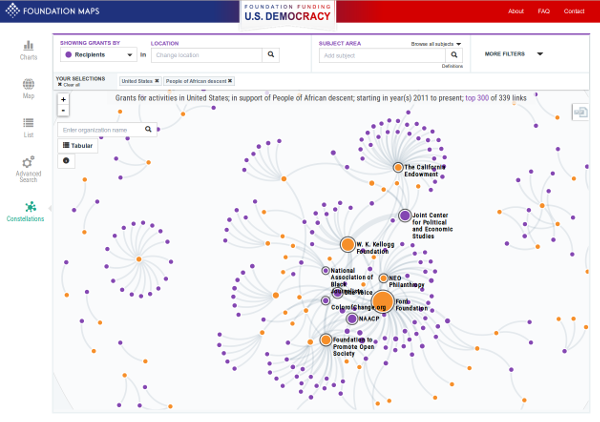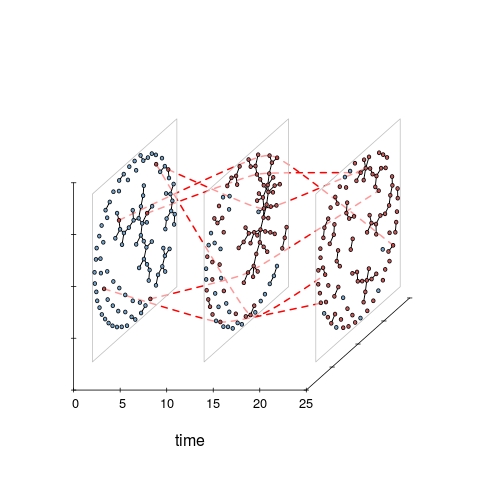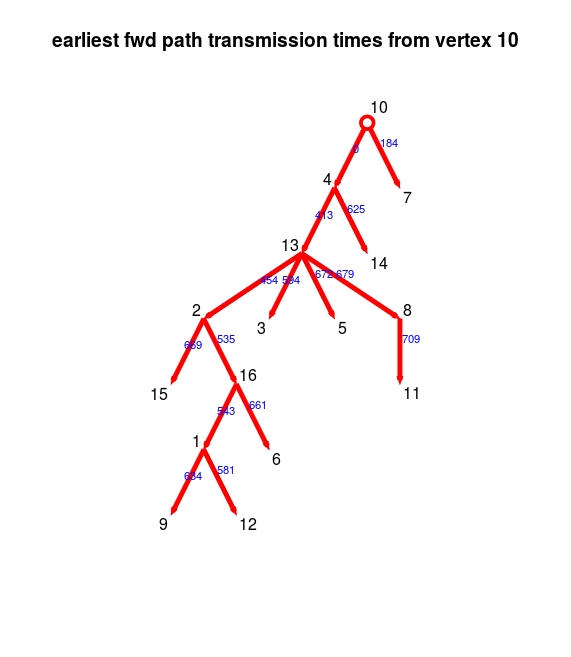The Foundation Center (recently?) released a neat web application that provides interactive visualization tools for their database of grant funding. It contains a “Constellation” interactive network view of grant-making relationships.
The network map is SVG, built with D3.js, and has a well designed interface with features for refining queries, and flipping between charts, tables, maps, and network views of the same data. Most of the graphic elements can be clicked on to bring up a popup with a more detailed breakdown. The network map is very reminiscent of Angels of the Right (2011), except that they seem to give access to all of the current IRS 990 data (not just conservative foundations) and provide lots of categorization and geocoding as well. Although it seems to be a paid subscription service (with a free trial?), much of the data for the US appears to be available to play with via democracy.foundationcenter.org Note that although the tool does provide CSV data downlaod for some views, this is not open data. The Terms of Service prohibit scraping, bulk download and web redistribution.
One criticism I have — common to many sites using the D3.js network template is — why should the user wait to watch the network layout process in real time? It can be performed so much more quickly in the background, without eating my entire CPU updating the browser DOM when I’m trying to type the next query. Also, I’m not sure exactly what some of the network stats are calculating (sometimes it reports number of connections per vertex < 1, which doesn't seem possible for these networks).



